What Makes a Good Expo Pavilion?
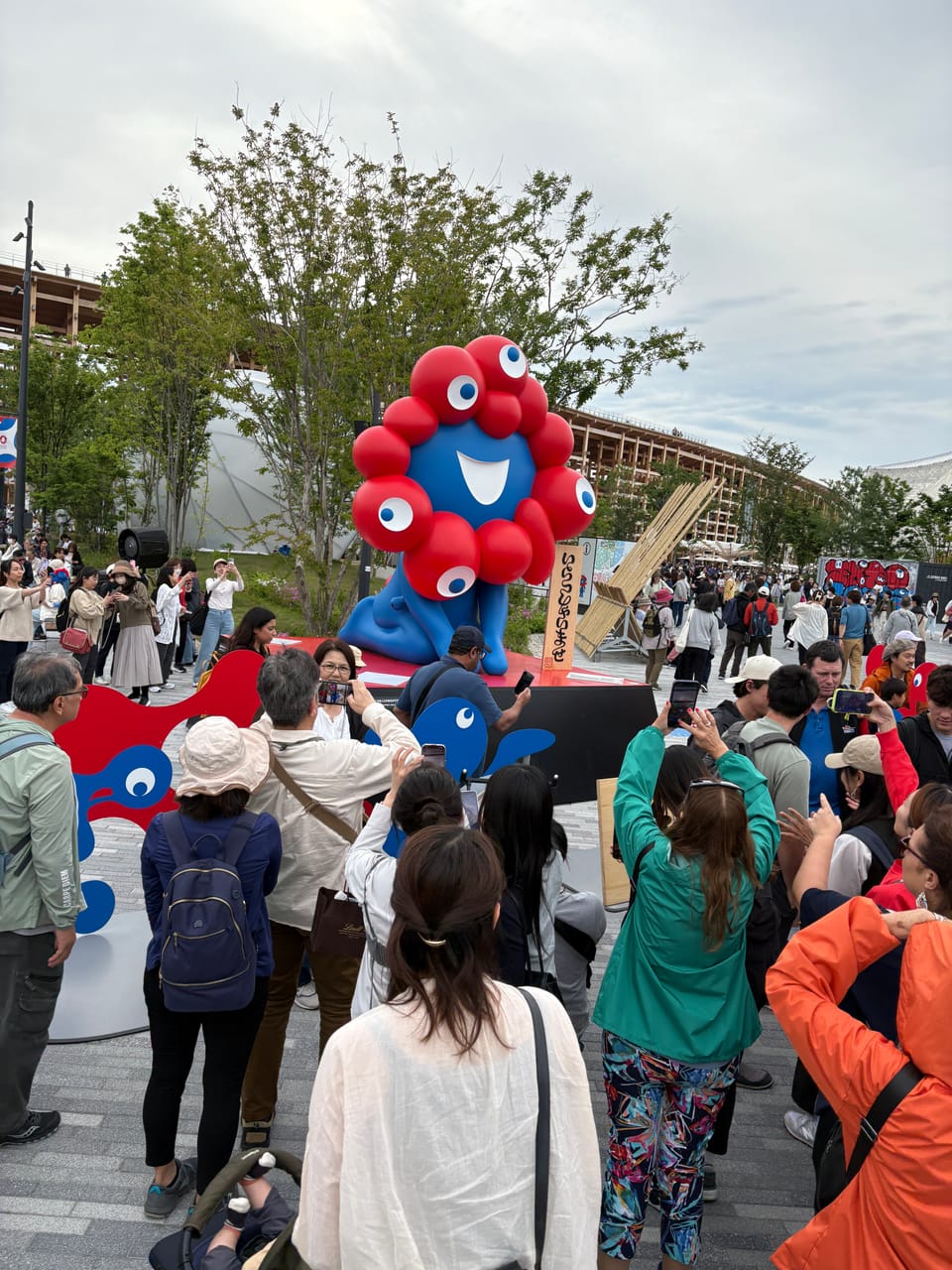
I am just back from the 2025 World Expo in Osaka, where many countries make one of their biggest public diplomacy investments (short of hosting the Olympics or another mega-event). Japan reportedly spent $250m on their Pavilion at Osaka 2025. The UK budgeted $34m; France about $60m; and the United States about $75m.
With figures like this, you have to ask: Why do countries do it? How does it fit into their public diplomacy or nation branding strategy? And what does good look like?
This post focuses on this last part–what makes a good Expo pavilion. I'll start by introducing a simple analysis framework, then dive in with a favorite example from Expo Dubai 2020.
Expo Pavilions: A Framework
For all my pavilion breakdowns, I am using the same format. I'll first break down the public engagement basics (Goal, Audience, Program), followed by some additional details that are more Expo-specific.
Goal, Audience, Program (GAP) is a briefer version of the Public Diplomacy Framework that the State Department uses for broader public diplomacy program design. For most analysis, it's sufficient to spot bad program design and understand whether something is likely to be successful or not. Here's what I look for.
Goal: Does the program have a goal? Is it a plausible, realistic goal? Is it a good goal rooted in a well-reasoned strategy? Most public engagement campaigns aren't rocket science, and they also aren't covert. Expo pavilions are very much the same. The goals (or lackthereof) are usually obvious to a discerning observer. What I look for is whether a goal exists and whether it seems plausible on its face.
Audience: Who is the program targeting? Is that audience obviously important to the higher level goal? This is where a lot of programs fall down, especially for Expo pavilions. Expo pavilions have a very specific (and relatively unchangeable) audiences that they actually reach. There are always a smaller number of global audiences, which skew toward the more elite. The question is whether the goals laid out actually match a realistic audience?
Programming: What methods are being used to reach the audience? Does it have a plausible chance of success in creating the desired change? For Expos, I lump several things together in programming – the exhibition, rotating performers/temporary exhibits, events, and surrounding media engagement. All of these are programmatic tools.
For Expos, there are a few other specific elements I include.
Execution: Is the quality good? Expos are generally costly and high production value. Visitors only see a pavilion once, and mistakes hurt, whether it is broken exhibits, blue screens of death, audio issues, or something else.
Sponsorship and Partnerships: Are there smart promotions of national products, services, and companies? An Expo pavilion may be the first time that someone sees an innovative product from a given company or even from a country. It may also be a rare chance to get to know a brand better – though no one wants garish displays of company logos that don't "work" or convey the right brand values to the pavilion's audience. I'll talk in a later post about some smart examples of company placement that reinforce nations' goals, especially supporting product awareness and exports.
Memorability: Will the experience stick with someone, leaving lasting attitude or behavior changes? The goal of most public engagement campaigns is durable attitude and behavior changes. Expo pavilions can be unusually sticky if done well. Numerous Japanese government leaders shared with me how memorable the Moon Rock at the Osaka 1970 Expo was for them and how the memory stuck with them. While working on the U.S. bid for Expo 2027, a State Department oral history project showed that Expo attendance leaves lasting memories of other countries, often inspiring further adventures around the world. Good pavilions are memorable, and they do tangibly shape behavior.
With that out of the way, let's walk through an example from Dubai 2020 before we turn to Osaka 2025 pavilions.
Spain's 2020 Expo Dubai Pavilion
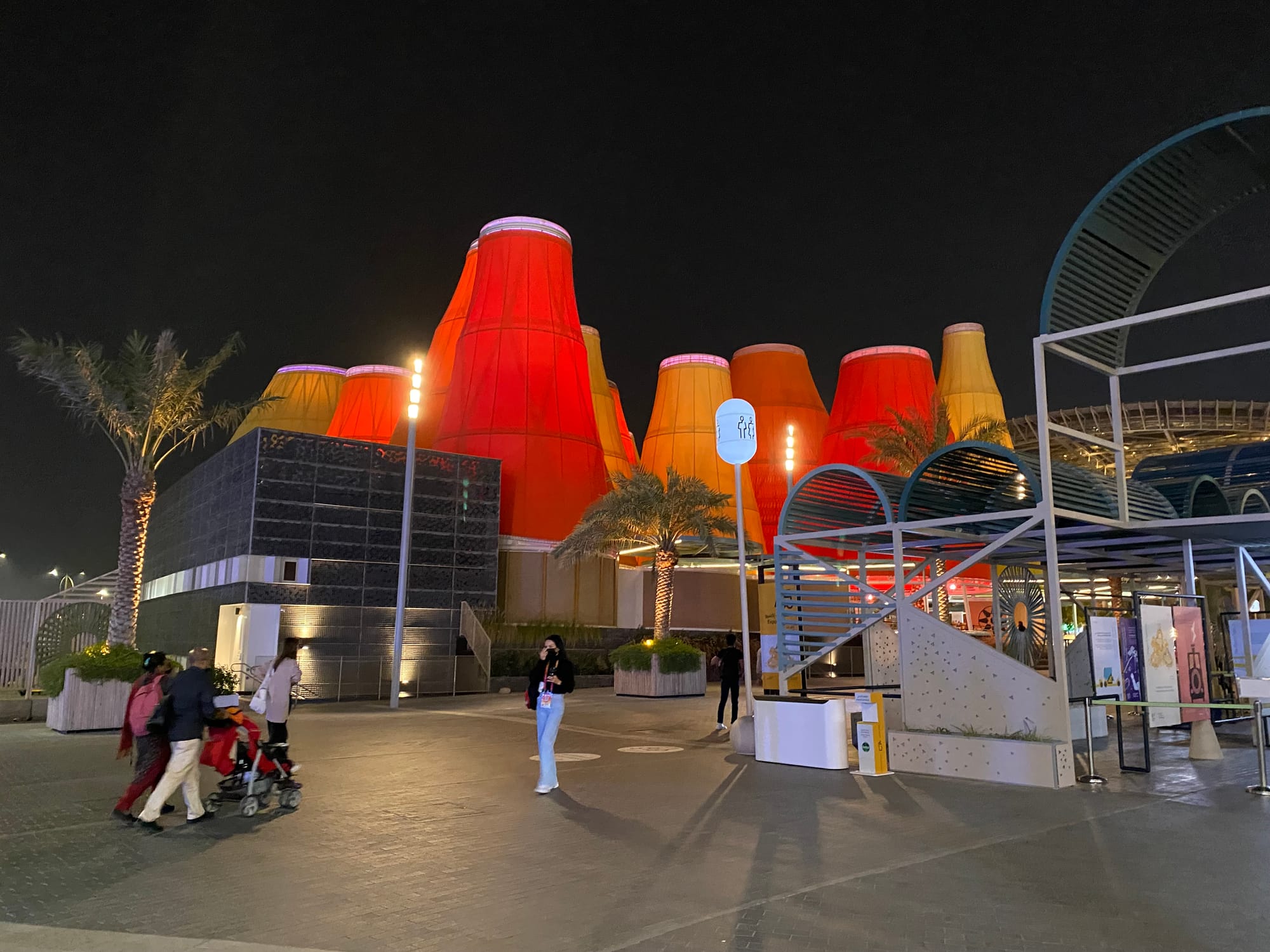

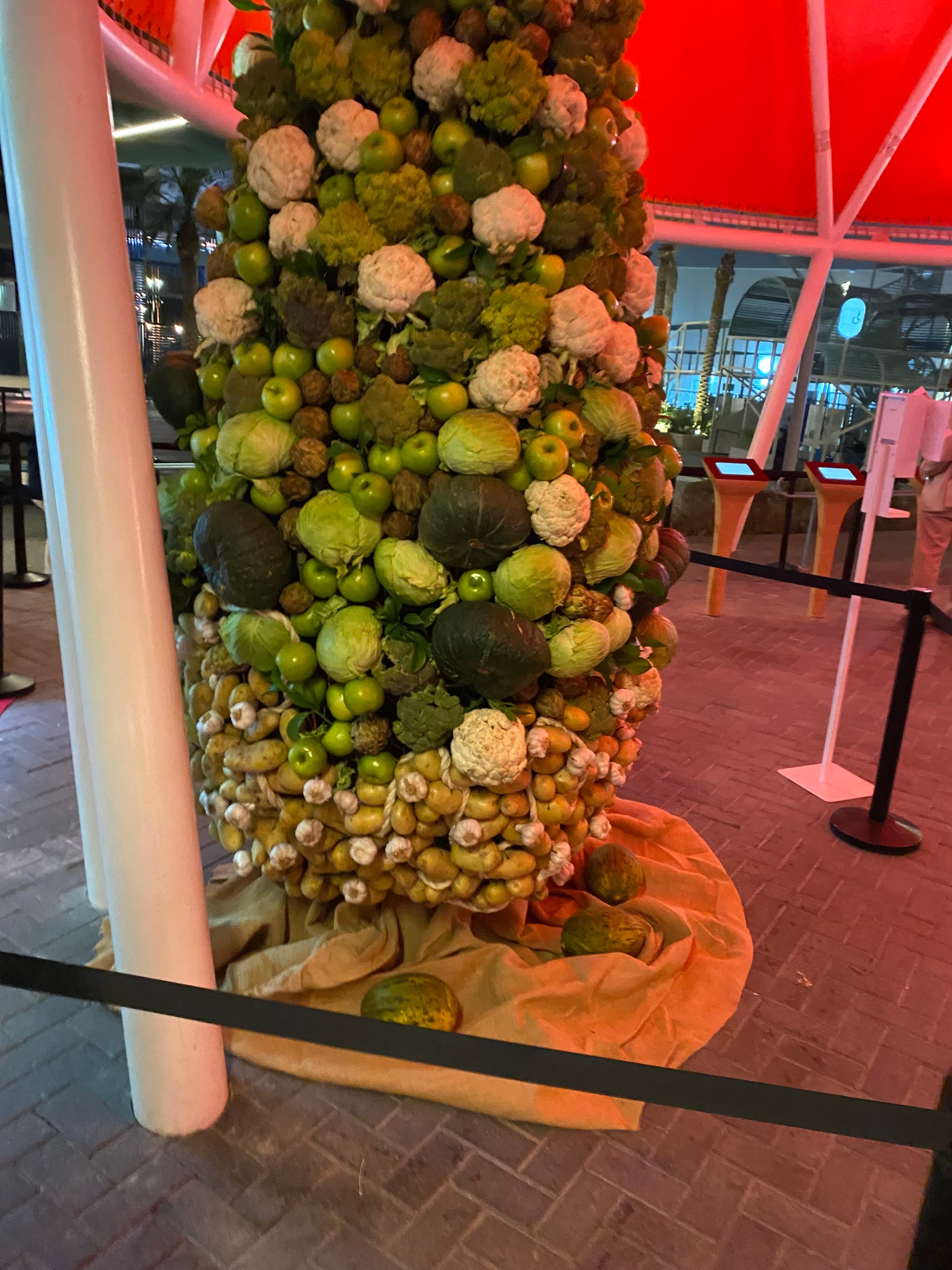
Spain’s pavilion in Dubai took the form of a series of tents--actually cooling towers with architectural details that draw on Moorish, African, and Arab designs. Inside, you were greeted with beautiful tree sculptures crafted from live fruit and vegetables. Spain's restaurant is in the background, alongside a mini-plaza with seating and chess boards. A display highlighting Spanish espadrilles sits along one wall.
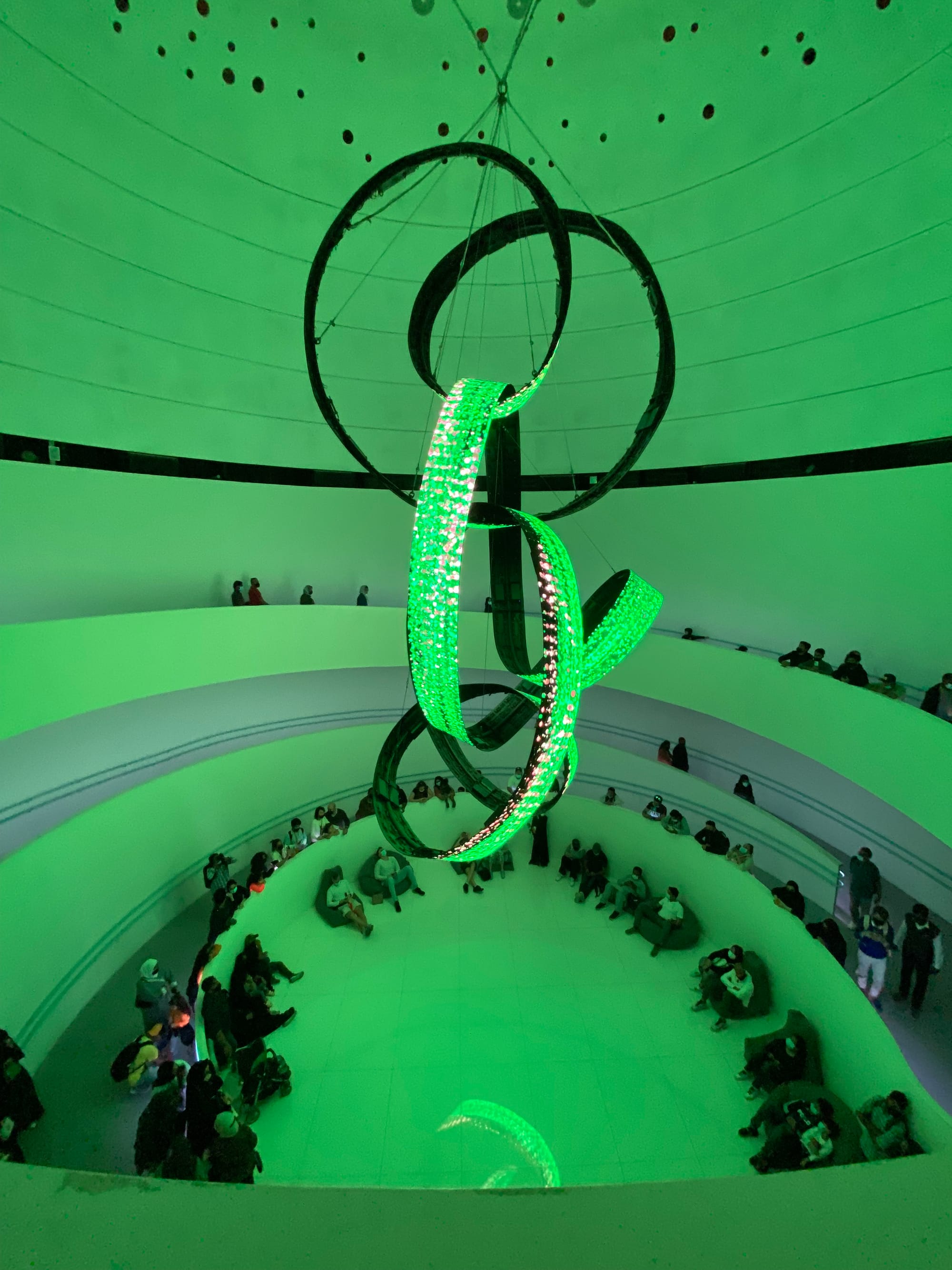
Inside the pavilion, you descend a circular ramp around a hanging sculpture. As you descend, the lights moved and shifted. By the bottom of the ramp, it was apparent that the sculpture was motion sensitive--reacting to the movements of the crowd in the room.
After exiting from the sculpture, you have a chance to watch "August Moon" – an original short film I enjoyed so much that I hunted down a Youtube clip and embedded it at the end of this post. I watched it twice through.
The final room in Spain's pavilion is "forests of the future." The exhibit has a unique fragrance developed by Iberchem, drawing on the wooded forest smells from northern Iberia. forest of science and technological innovation.
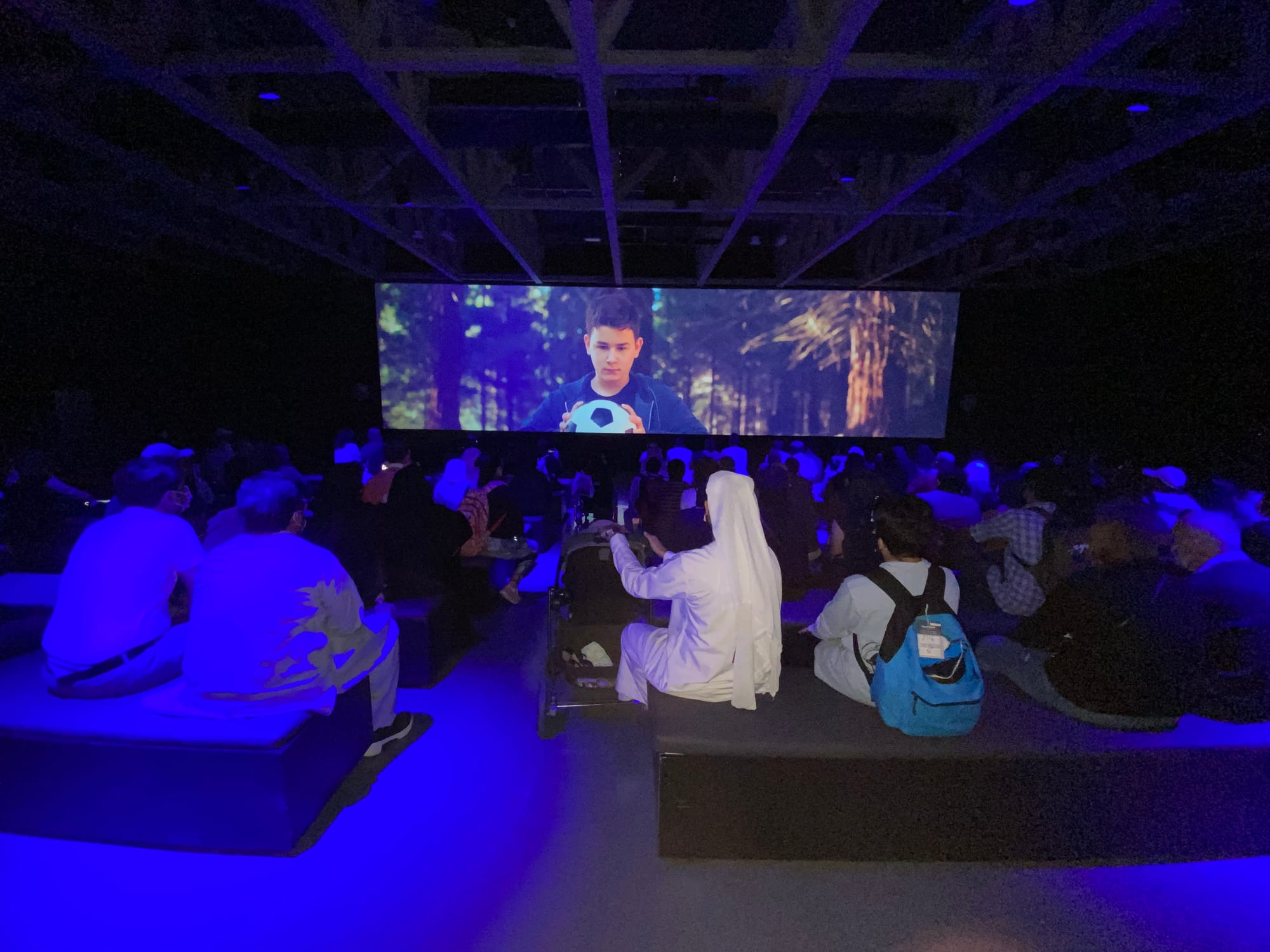
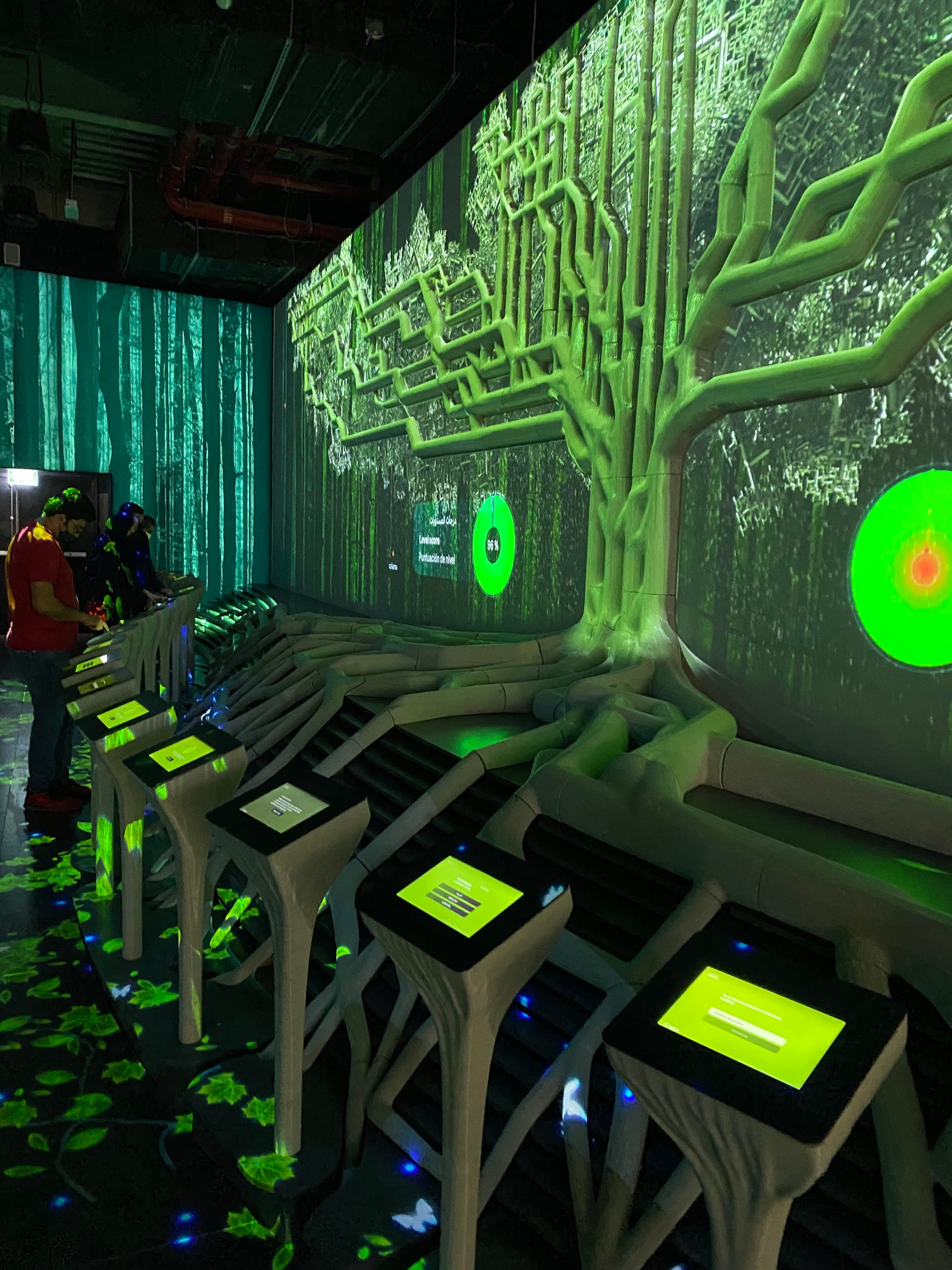
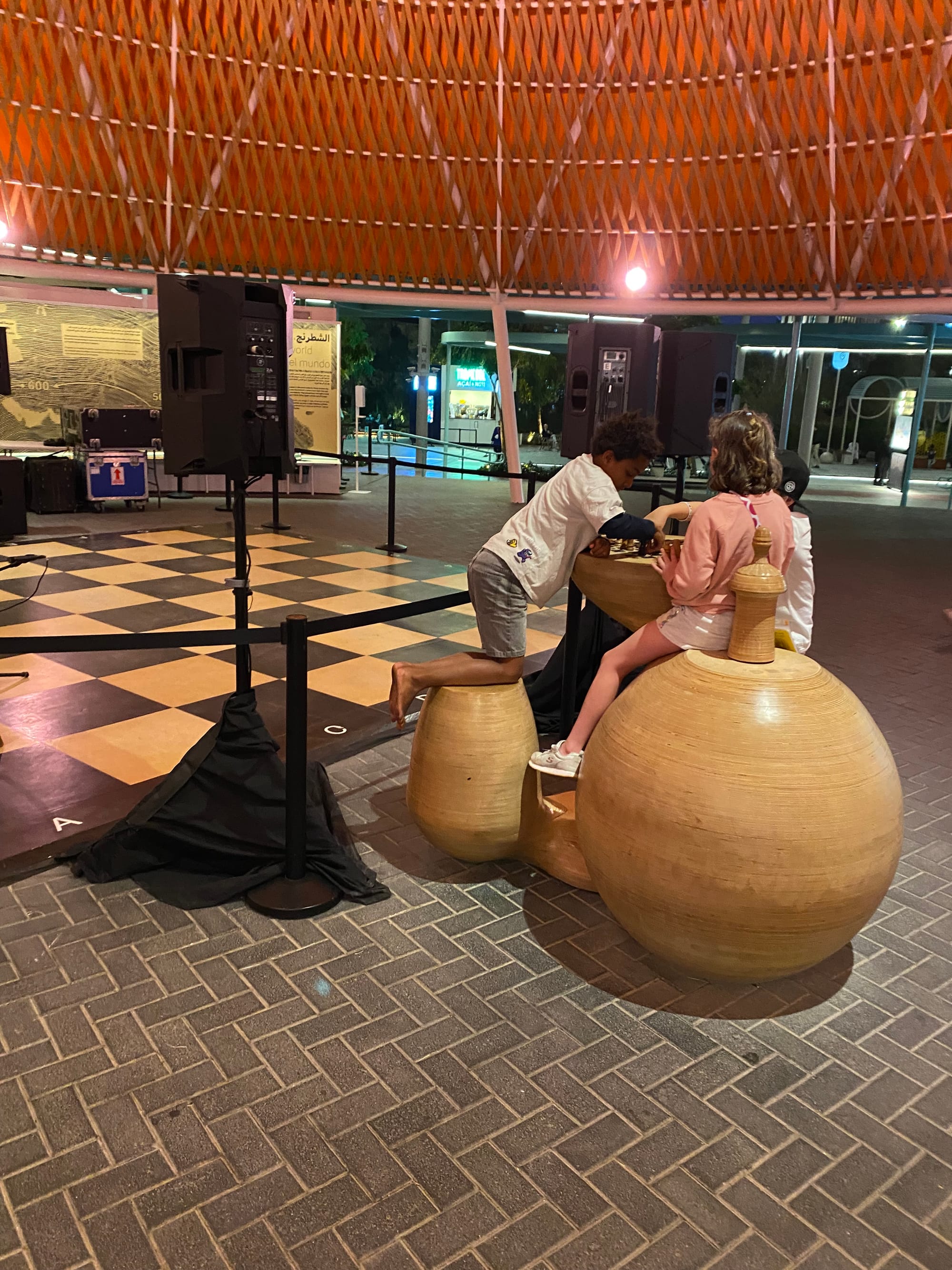


Photos from the Spanish pavilion at Expo 2020 Dubai
Finally, before you exit, there are iPads with a brief survey with some questions, a few excerpted here:
- Do you consider Spain to be a leading country in innovation and development?
- Would you consider coming to Spain to set up a company or to work remotely?
- Do you think Spain is a suitable retirement destination?
- Do you think Spain is an attractive destination where to study?
- Do you consider Spain to be a leading country in initiatives in favor of the SDGs?
- Do you consider Spain to be a country with a healthy and high-quality cuisine?
- Do you think Spain is a design, art, and culture global power?
- Do you think Spain is an attractive and enjoyable tourist destination?

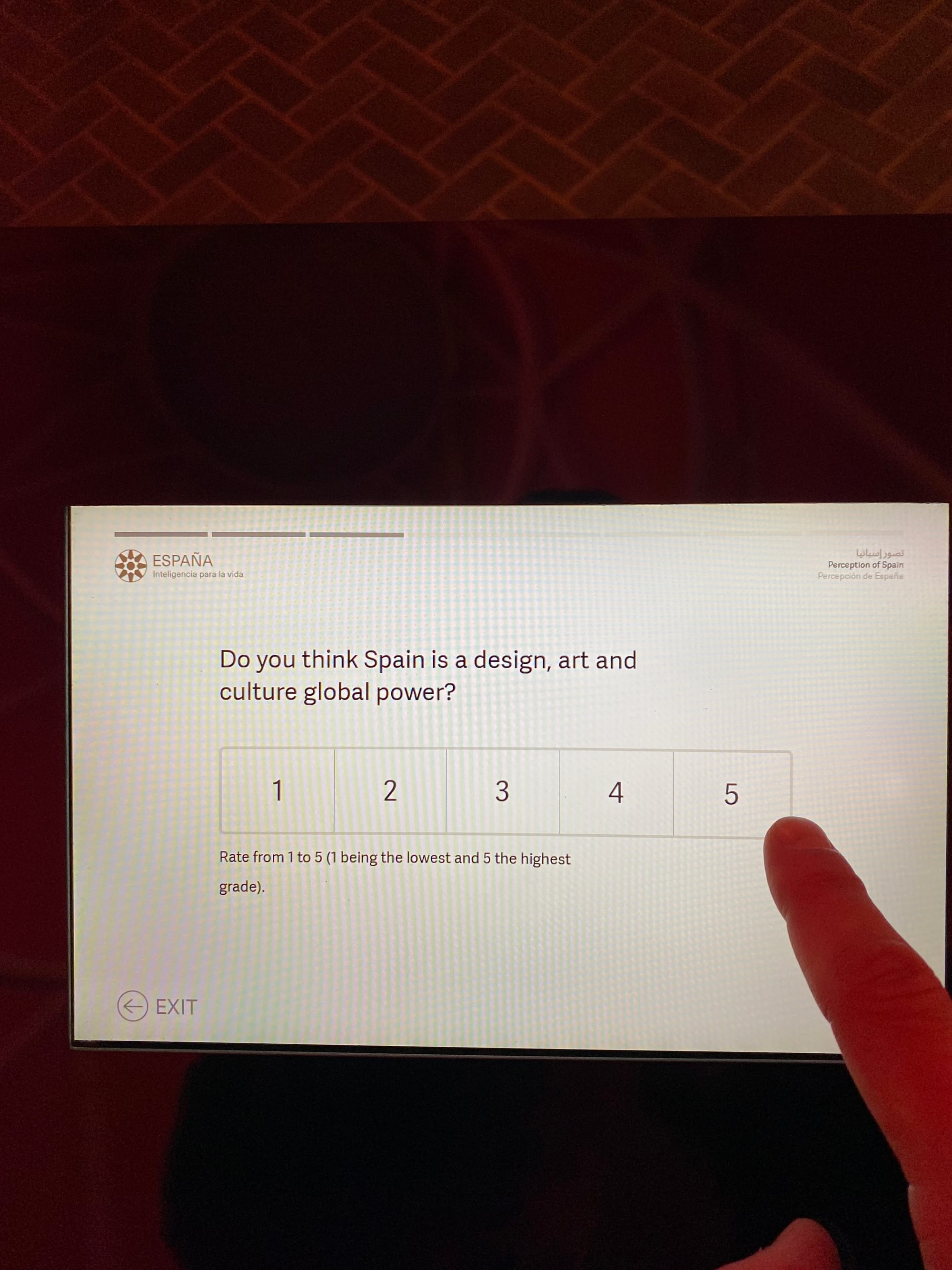
Spanish pavilion's end survey
The survey tells us a lot about what the pavilion is about and its goals--a beautiful segue into analyzing the Pavilion.
What’s good about this pavilion?
The basics
Goals: The goals of Spain's pavilion are fairly obvious after you read the survey questions. They wanted you to attract travel/tourism, business investment, and study. The official page on the Expo 2020 website has an excellent tagline in its first theme statement: "A country to live in."
Audiences: The pavilion's primary audience was also fairly obvious from the survey. The pavilion went after a public audience, not elite government audience, albeit one with the means to travel, to start businesses, and to study abroad. Geographically, the pavilion didn't distinguish considerably between Emirati and non-Emirati audiences.
Programming: The design of the pavilion essentially followed the goals outlined above. The film shows a diverse range of Spanish landscapes, while the forest of the future section tells the story of Spain as a destination for business creation and investment. The art installations emphasize the tagline.
Clear and well-defined goals. Right audience. Programming that lands on those goals. I walked away wanting to live in Spain. That is a mission success. While this seems obvious–you'll see with other pavilions from Osaka and Dubai that it isn't always the case.
Above and Beyond
Execution: Spain did not have the best technology in their pavilion; they had no giant LED screens, no holograms. Yet the attention to detail was excellent. Across two Expos, Spain's use of smell remains one of the best I have seen. The art film on a projector told all the story it needed to.
Sponsorship and Partnerships: Spain did an excellent job on tapping national leaders I'd never heard of like Iberchem to work on elements of the pavilion. The only thing that didn't land for me was one of their sponsorships, though – the espadrille manufacturers featured in a display outside. It did not obviously connect to the rest of the pavilion and felt like bare sponsored content.
Memorability: Three years after visiting this pavilion, it still sticks out in my mind as one of the best I have visited. Three things stick out: the exterior design, the smell in the forest, and the whimsical art inside. The exterior design was gorgeous when illuminated at night, and the idea of tents anchors it well. The smell of the Spanish forest was immersive, especially immediately after seeing a seven minute video of Spanish landscapes and life. Finally, the art was original and interactive. I watched kids play with the motion-sensitive installation. I did too.
I ended with memorability, because this is one of the hardest things to nail in government-led public engagement campaigns. Can you create memories and attitudes that stick? Spain did that here, and that is gold.
